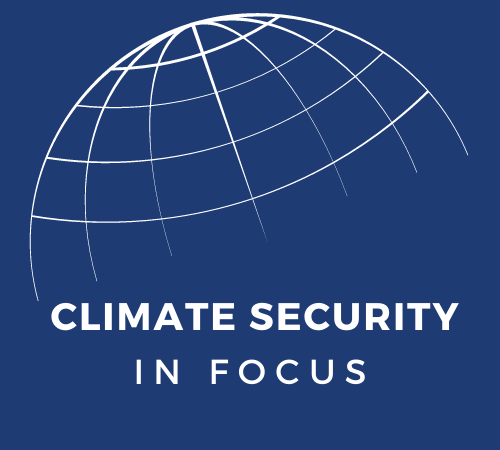
U.S. Food Security
Food security has become a key concern for the U.S. and the global community writ large, primarily due to Russia’s war in Ukraine. The growing crisis has been compounded by ongoing COVID-19 supply chain challenges as well as price volatility. As such, domestic food security has risen in the national consciousness, with public officials looking to identify potential policy remedies. With no immediate solution on the horizon, leaders must consider a range of policy options to address long term food security.
Domestically, the U.S. Department of Agriculture Economic Research Service (USDA ERS) found that 89.5 percent (116.7m Americans) of U.S. households were food secure—access at all times, to enough food an active, healthy life for all household members—throughout 2019 and 2020. But the remaining 10.5 percent (13.8m Americans) were food insecure—uncertain of having, or unable to acquire, enough food to meet the needs of all their household members. In 2020, 6.1 million children lived in food-insecure households, and 584,000 children lived in households that experienced very low food security.
Food insecurity can be attributed to a variety of factors from insufficient money to “food deserts.” The issue of food deserts gained prominence in U.S. policy communities following former First Lady Michelle Obama launch of the Let’s Move! campaign, which explicitly sought to end food deserts. They have been described as “nutritional wastelands” where “parents and children simply do not have access to a supermarket.” In 2011, Obama challenged attendees at the Mayor’s Summit on Food Deserts to attract grocery stores and businesses to sell fresh produce to their communities. According to Let’s Move!, over 81m Americans benefited from 520 local elected officials who committed to the program to combat food insecurity by expanding access to healthy food and raising awareness about healthy and sustainable food.
USDA ERS studies from 2017, 2021, and 2022 confirmed these findings. The 2017 study highlighted that low-income Americans and those without a vehicle are likely to have difficulty accessing a “healthy diet and lifestyle” and further suggested that “income and resource constraints” are likely “greater barriers to accessing healthy food retailers” than distance or closeness to a food retailer or grocery store. Alarmingly, results from the 2021 study illustrated that between 2015 and 2019, 11.1 percent of working-age veterans lived in food-insecure households, and 5.3 percent lived in households with “very low food security,” with veterans being at a 7.4 percent greater risk for food insecurity than non-veterans. The same study added that this elevated risk is specific to working-age veterans whose “most recent period of military service was during the pre-9/11 Gulf War era (August 1990 to August 2001) and the interwar period between May 1975 and July 1990.” Similar food insecurity rates were found among working-age veterans of the Vietnam War era. The 2022 study found that, in 2019, 40 percent of the U.S. population “lived more than 1 mile from a food store” and that low-income households “tended to live closer to the nearest food store than those with more resources.”
Despite food assistance programs being offered by the U.S. government, food insecurity persists in the U.S. The U.S. Department of Health and Human Services (HHS) has identified that the available programs do “address barriers to accessing healthy food,” but more research is needed to determine if reducing the overall level of poverty positively reduces the amount of food insecure households. HHS has also called for future studies to consider the characteristics of communities and households that influence food insecurity. Specifically, the USDA ERS 2021 study called for future research to consider veteran experiences with Supplemental Nutrition Assistance Program (SNAP) to better understand the relationship between veteran status and food insecurity. The findings from these studies can subsequently be leveraged by policymakers and the U.S. government to inform the extent to which changes are made to existing food assistance programs or the establishment of new programs. These enhanced programs, in turn, can bolster U.S. domestic food security—likely by increasing access, improving job opportunities (to reduce poverty), and subsidizing healthy food.
Other proponents of improving domestic food security have called for the creation of a strategic food reserve to help address food insecurity before it risks spiraling into other security threats, such as social unrest and political violence. A food reserve can defray volatility in food supply and cost, and such reserves have demonstrated success, as utilization of the U.S. Strategic Petroleum Reserve by the Biden administration has shown. Additionally, Senator Grassley (R-IA) introduced the Food Security is National Security Act in October 2021 which calls for the amendment of the Defense Production Act of 1950 to include the Secretary of Agriculture and the Secretary of Health and Human Services as members of the Committee on Foreign Investment in the U.S. and to require the Committee to consider the security of the food and agriculture systems of the U.S. when determining to take action with respect to foreign investment.
Climate Security in Focus is a blog series dedicated to exploring key elements of climate security that impact American interests both at home and abroad. The series aims to examine specific aspects of climate security issues in order to better understand climate policy challenges, facilitate conversation, and generate ideas.





